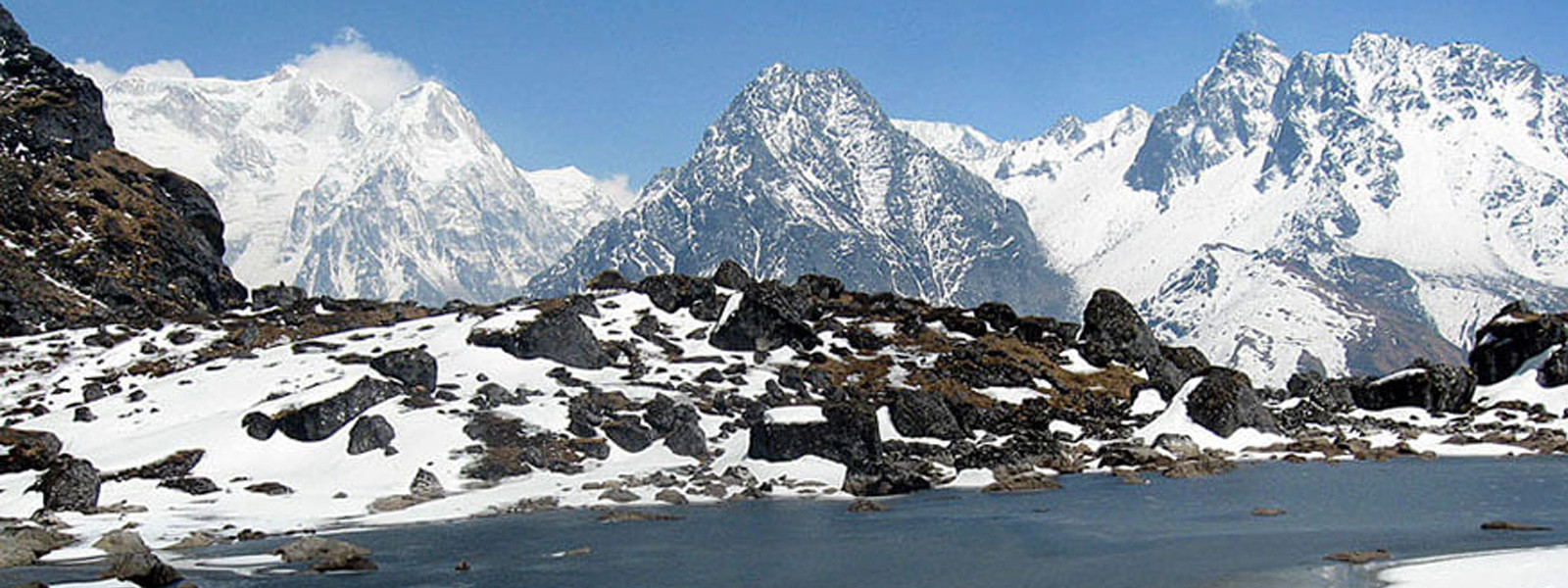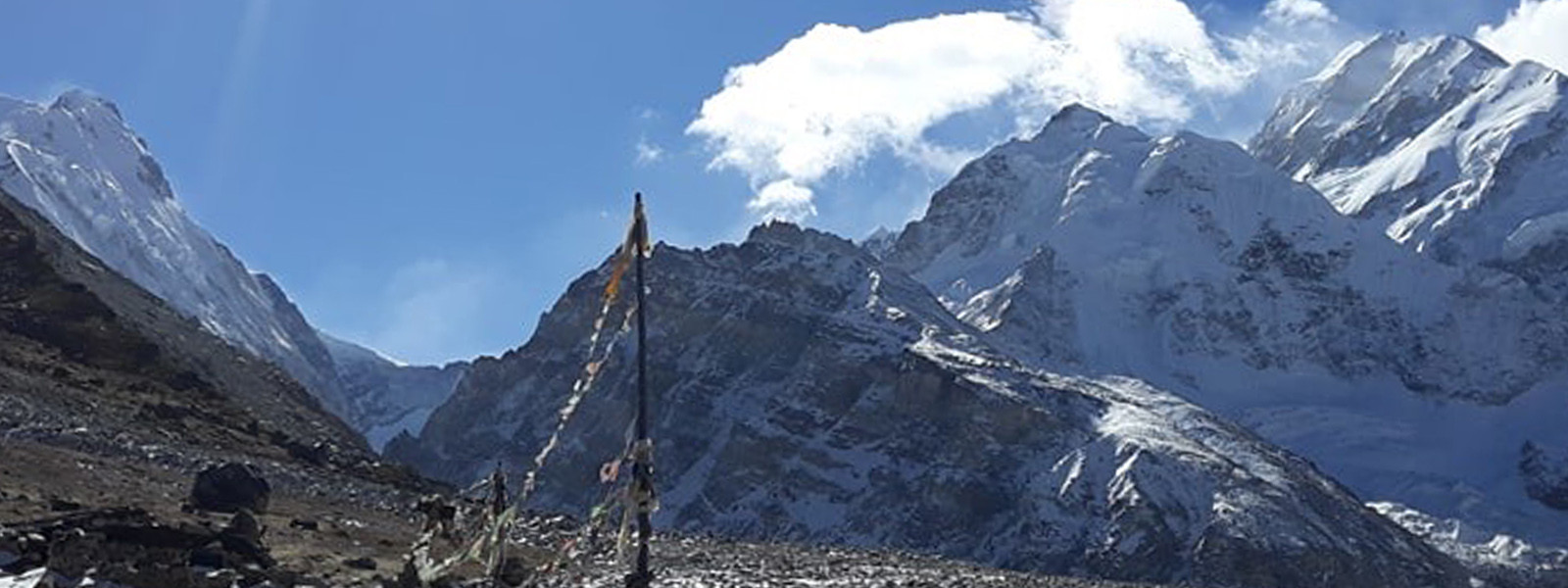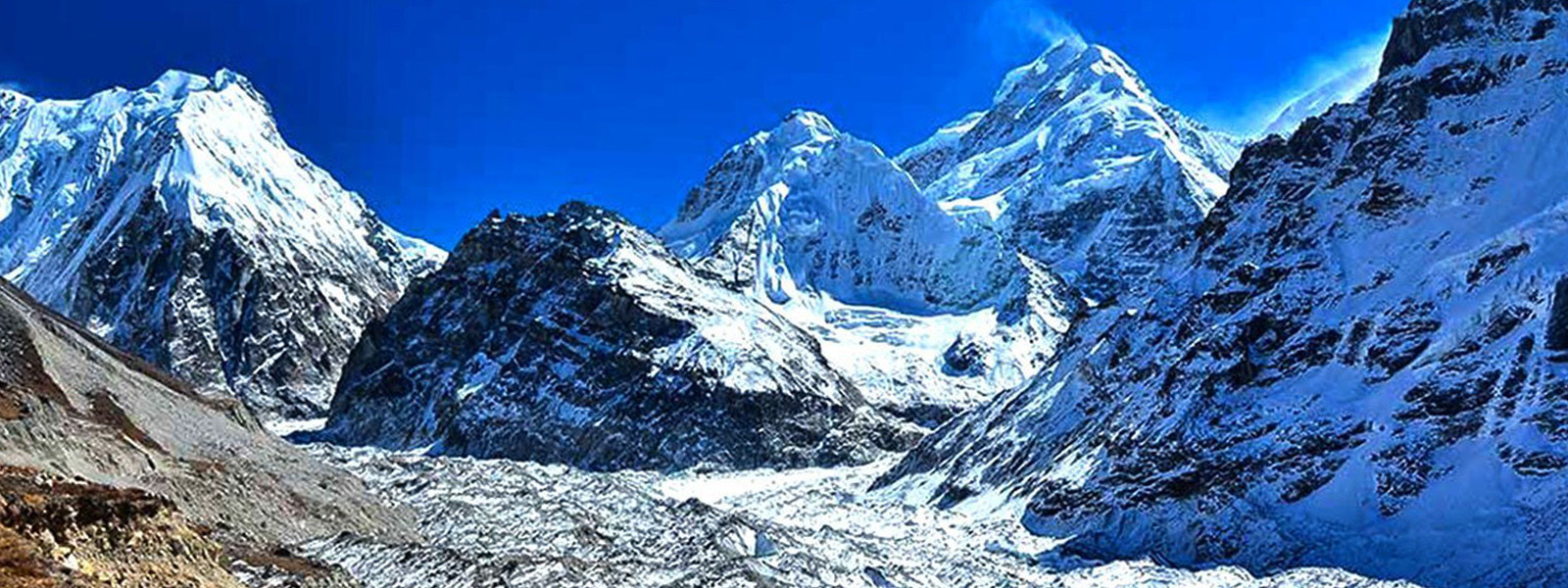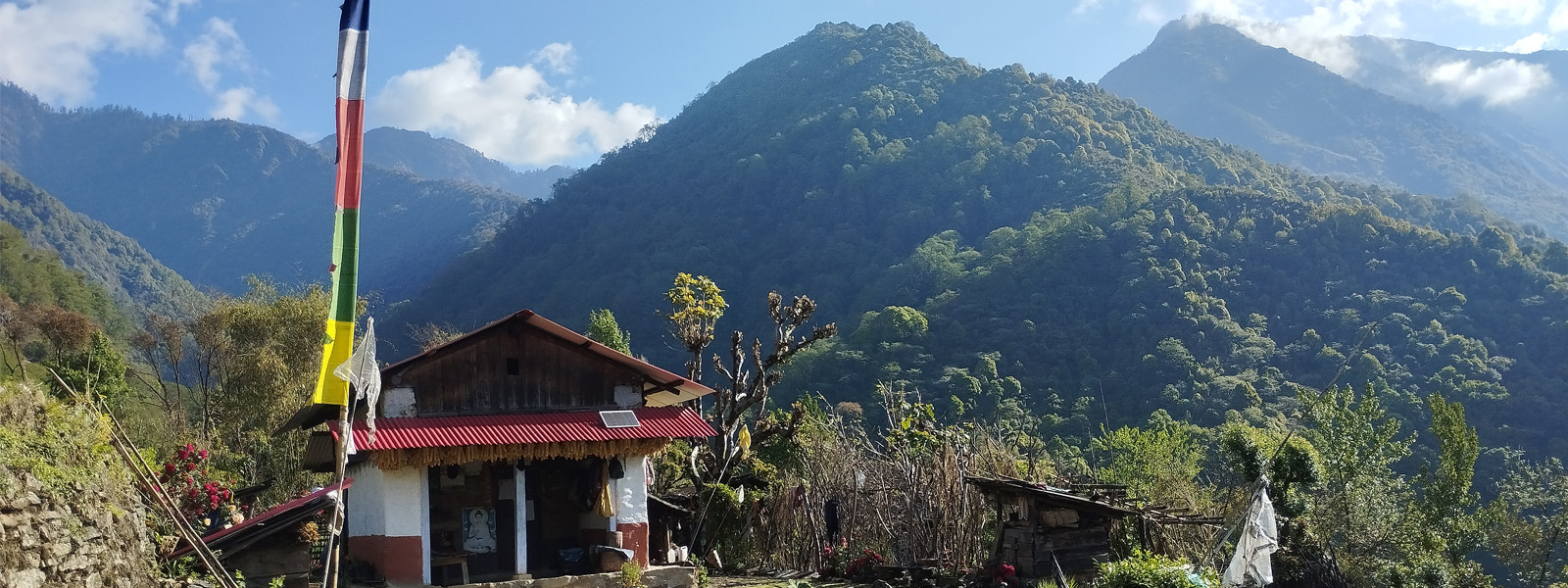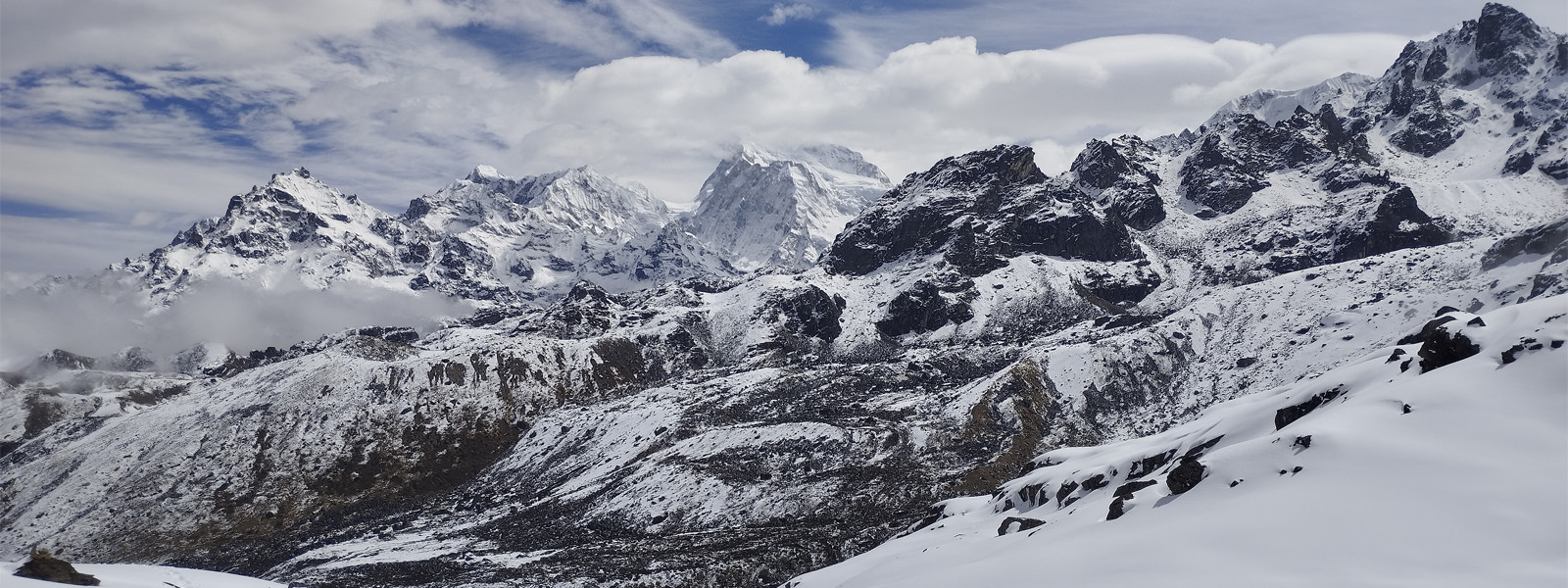Overview
- Duration: 18 Days
- Trip Grade: Difficult
- Group Size:: 2+
- Max. Altitude:: 5,150 m
- Daily walking Hour: 6 - 8 Hrs
- Activities: Trekking & safari
- Accommodation:: Tea house and Camping
- Transportation: Car/ Van/ Bus/ Plane
- Accommodation:: Breakfast - Lunch - Dinner
- Best Season: February, March, April, May, September, October, November & December.
Highlights
(1) Into the wild
(2) clouds see from the top
(3) Can see almost 25 percent local lifestyle of the Himalaya country
(4) Mountains over eight thousand can be seen
The Kanchenjunga trek is a mesmerizing adventure in the eastern region of Nepal, offering breathtaking views of the world's third-highest mountain, Kanchenjunga, along with stunning landscapes, diverse flora and fauna, and encounters with local cultures. Here are some highlights of the Kanchenjunga trek:
-
Scenic Beauty: The trek presents unparalleled natural beauty with lush forests, alpine meadows, glacial rivers, and pristine valleys. Trekkers are treated to panoramic views of towering peaks including Kanchenjunga, which stands at 8,586 meters (28,169 feet).
-
Remote and Untouched: The Kanchenjunga region remains relatively untouched by mass tourism, offering trekkers a chance to experience authentic Nepalese culture and pristine wilderness away from the crowds.
-
Rich Biodiversity: The trek takes you through a variety of ecosystems, from subtropical forests filled with rhododendrons and orchids to high alpine landscapes above the tree line. It's a haven for biodiversity, with chances to spot rare wildlife such as the elusive snow leopard, red panda, and Himalayan black bear.
-
Cultural Encounters: Throughout the trek, you'll encounter various ethnic communities like the Rai, Limbu, and Sherpa people, known for their warm hospitality and rich cultural heritage. You can experience their unique traditions, architecture, and cuisine firsthand.
-
Challenging Terrain: The trek offers a mix of challenging terrains, including steep ascents, high passes, and rugged trails, making it suitable for experienced trekkers seeking an adrenaline-packed adventure.
-
Remote Villages: Trekking through remote villages like Ghunsa, Lhonak, and Pangpema allows you to immerse yourself in the traditional Himalayan way of life. These villages offer basic teahouses for accommodation, providing a glimpse into the simplicity of mountain living.
-
Kanchenjunga Base Camp: The trek culminates at the Kanchenjunga Base Camp, where trekkers are rewarded with awe-inspiring views of the surrounding peaks, including Kanchenjunga itself. It's a surreal experience standing at the foot of one of the world's highest mountains.
-
Crossing High Passes: The trek involves crossing several high passes such as the Sele La Pass (4,290m) and the Mirgin La Pass (4,663m), each offering breathtaking vistas of the Himalayan landscape and adding an element of adventure to the journey.
-
Off-the-Beaten-Path Experience: Unlike the popular Everest and Annapurna treks, the Kanchenjunga trek offers a more off-the-beaten-path experience, perfect for those seeking solitude and tranquility amidst the grandeur of nature.
Overall, the Kanchenjunga trek is a once-in-a-lifetime adventure that combines challenging trekking with unparalleled natural beauty, cultural immersion, and the thrill of exploring one of the most remote corners of the Himalayas.
Kanchenjunga region is a beautiful wonderland in the far-eastern region of Nepal. The beautiful foothills of Mt. Kanchenjunga (8586m), the third highest mountain in the world, offers thrilling adventures to avid trekkers worldwide It is neither hard nor easy.
Kanchenjunga trek is a spectacular long-duration journey full of interesting scenarios. This immense Himalayan trail takes you through virgin territories in remote landscapes, barely anyone has ever been to. Moreover, trekkers can also immerse themselves in the beautiful Himalayan view of the region. Kanchenjunga, also spelled Kangchenjunga, is the third highest mountain in the world, with an elevation of 8,586 meters (28,169 feet). It is located on the border between Nepal and India in the eastern Himalayas, and is considered one of the most beautiful and remote mountains in the world.
The name "Kanchenjunga" is derived from the Tibetan language, meaning "Five Treasures of the Snow," referring to the mountain's five distinct peaks. The mountain is sacred to both Nepalese and Sikkimese people, and is a popular destination for mountaineers and trekkers.The Kanchenjunga mountain range is home to a variety of flora and fauna, including the endangered snow leopard and the red panda. The area is also known for its unique cultural heritage, with many ethnic groups, including the Limbu and Sherpa, living in the region.
Trekking in the Kanchenjunga region is a popular activity, with many trails passing through remote villages, alpine meadows, and high mountain passes. The region offers stunning views of the Himalayas, including the Kanchenjunga massif, as well as a chance to experience the local culture and customs.
Overall, Kanchenjunga is a significant mountain in both spiritual and natural terms, attracting visitors from around the world who are seeking adventure, spiritual connections, and natural beauty.
This is the second time I have been exposed to the corona virus in 2020. covid 19
(1) Into the wild Himalayas
(2) VIew of mountains above 8000 meters like Kanchanjunga, Mt.Everest etc.
(3) Lifestyle of the peoples living in the Mountains
Kanchanjunga region lies in the eastern part of Nepal. Kanchanjunga translated in english is “The Five Treasures of the Snow” which represents the five prosperties of God, which are gold, silver, gems, grain and holy books.
Mt. Kanchanjunga 8586 meters tall, which makest it the world’s third highest mountain. Kanchanjunga trek offers an exciting experience in the Himalayas of Nepal. Kanchanjunga trek is a strenuous trek which has Tea houses and hotels throught the trail. Kanchanjunga trek starts from the tropical lowlands with dense humid forests slowly gaining altitude till we reach the sub-alpine shrubs and glaciers. The beautiful Rhodendron forests in the temperate region is one of the most beautiful aspects of this terk.
Kanchanjunga region include temperate broadleaf and mixed forests like oaks, fir birch, maple, willow and so on. Alpine grasses and shrubs and medicinal plants and herbs are found on the higher plateaus. Many endangered mammal species like musk deer, snow leopard, Himalayan Tahr, wild dog, sloth bear, civet, Himalayan black bear, red panda, goral and reptiles like rat snake and Russell’s viper are the important animal species found in this region.
People here are very friendly and welcoming. People of different casts like, Rai, Limbu and Sherpa and others live here making a home to rich culture and tradition. Most people here follow Buddhist and Hindu religion with the blend of their own rites and rituals.
Kanchanjunga region is easily accessible through flight or by bus or jeep. We fly to Biratnagar and Suketar in Taplejung of Nepal from Kathmandu.
Spring and the autumn are the best seasons to visit the Kanchanjunga while the monsoon can be quiet harsh and the winter is very cold as well.
Trek Itinerary to Kanchanjunga Base camp 23 days
Day 01: Warm welcome by Himalaya Thunder Team in the Nepalese Cultural way at the Airport and transfer to the hotel
Day 02: Fly to Suketar from Kathmandu and trek to Thumma 4-5 hrs
Day 03: Trek to Chirwa 6-7 hrs
Day 04: Trek to Sakathum 5-6 hrs
Day 05: Trek to Amjilosa 4-5 hrs
Day 06: Trek to Gyabla 4-5 hrs
Day 07: Trek to Ghuinsa 6-7 hrs
Day 08: Rest day at Ghunsa for acclimatization
Day 09: Trek to Khambachen 5-6 hrs
Day 10: Trek to Lhonak 4-5 hrs
Day 11: Trek to Pang Pema 3-4 hrs.
Day 12: Trek to Khambachen 6-7 hrs.
Day 13: Trek to Ghunsa 4-5 hrs.
Day 14: Trek to Sele La via Tamo La
Day 15: Trek to Tseram via Mirgin La and Snelapchela
Day 16: Trek to Ramche 2-3 hrs
Day 17: Trek to Yalung Glacier 6-7 hrs
Day 18: Trek to Tseram to Lamite Bhanjyang 6-7 hrs
Day 19: Trek to Yamphudin 5-6 hrs.
Day 20: Trek to Phumphe 5-6 hrs.
Day 21: Trek to Kunjari 6-7 hrs
Day 22: Trek to Suketar 6-7 hrs.
Day 23: Fly to Kathmandu
Note: Presented Itinerary is our tentative plan to make your Nepal experience rich. It can be customized as client's interest and timeframe.
Trek Itinerary to Kanchanjunga Base camp 18 days
Day 01: Warm welcome by Himalaya Thunder Team in the Nepalese Cultural way at the Airport and transfer to the hotel
Day 02: Fly to Suketar and trek to Tembewa 4-5 hrs
Day 03: Trek to Khesewa 5-6 hrs
Day 04: Trek to Mamanke 6-7 hrs
Day 05: Trek to Yamphudin 3-4 hrs
Day 06: Trek to Amji Khola 5-6 hrs
Day 07: Trek to Torontan via Lamite Bhanjyang 5-6 hrs
Day 08: Trek to Tseram 4-5 hrs
Day 09: Trek to Ramche 2-3 hrs
Day 10: Trek to Yalung Glacier 6-7 hrs
Day 11: Trek to Lamite Bhanjyang 6-7 hrs
Day 12: Trek to Yamphudin 5-6 hrs
Day 13: Trek to Phumphe 5-6 hrs
Day 14: Trek to Kunjari 6-7 hrs
Day 15: Trek to Suketar 6-7 hrs
Day 16: Fly to Kathmandu
Day 17: Kathmandu valley sightseeing
Day 18: Farewell to the guest at the airport by the Himalaya Thunder Team.
Note: Presented Itinerary is our tentative plan to make your Nepal experience rich. It can be customized as client's interest and timeframe.
Exclusion
Gratitude and tips for guide, porter (tipping is not required by rule but regarded as likely).
Fixed Departure Dates
We will easily organize this trip on the dates requested by you. Please contact us for your customized departure date
ASK AN EXPERT
-
+977 984-181-6439 (Ajaya)
24/7 customer support -
info@himalayathundertreks.com
dahalajaya7@gmail.com

